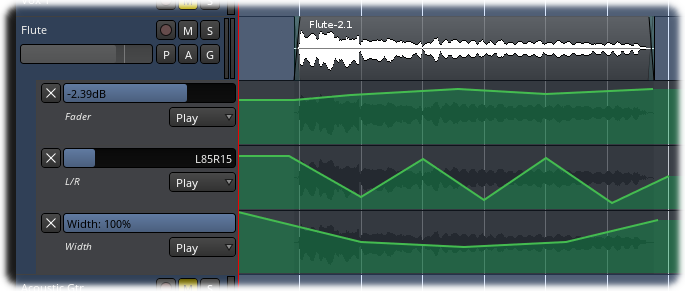Automation Lanes
An automation lane is similar to a track in that it holds data that can be played back. However, unlike a track, it is not an independent entity—it is always attached to the track that it controls. Automation lanes also contain zero to one automation curves. Each lane controls one and only one parameter of the track it is attached to.
Every track will have at least five automation lanes associated with it: trim, fader, mute, and pan (which consists of two lanes: L/R and Width); it can possibly have many more if there are any processors associated with it. All these lanes are automatically attached to the track but hidden, and initially they are all empty (have no automation curves in them).

Automation lanes typically have the following controls:
- A hide button (square button with an "X" inside)
- A horizontal fader
- An automation mode selector
The hide button, as the name implies, hides the automation lane. The horizontal fader controls the level of the parameter that the lane controls; manipulating this while in Write or Touch mode during playback will make changes to the lane's automation curve. The automation mode selector selects which mode the lane is in (Manual, Play, Write, or Touch).
The hide button will only hide the lane; it does not remove it from the track. The automation lane never really goes away—the closest one can get to that is to clear the automation curve and hide the lane.
